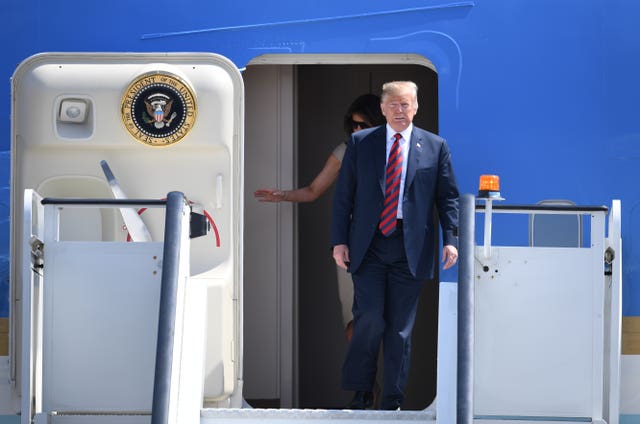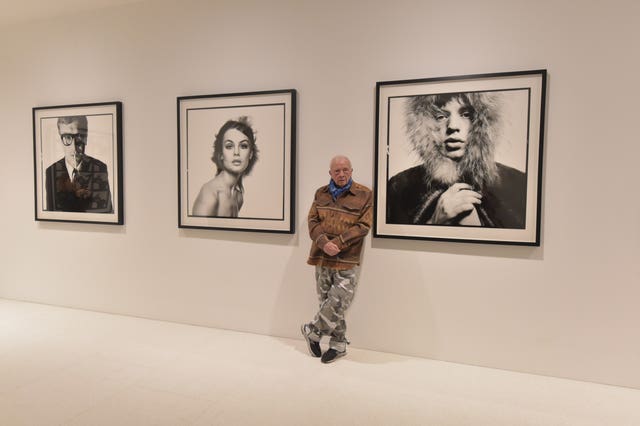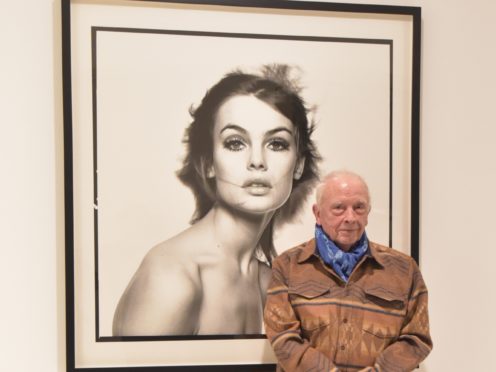Renowned photographer David Bailey has claimed Donald Trump once approached him for advice, asking “how do you get such classy birds?”.
Bailey produced portraits of 1960s figures who embodied the swagger and hedonism of sexually liberated Swinging London, in which the man behind the lens became a key celebrity himself.
He has claimed sexual freedoms have been revoked by a politically correct age of “inquisition”, complaining he has suffered attacks from “tough lesbians” and saying a movement like #MeToo would not happen in the 1960s.
The famed fashion photographer, who wed models Catherine Deneuve, Marie Helvin and Catherine Dyer among his four marriages, said that he was approached for advice from the now US president who he knew as “Don”.
Bailey, who said he admires Mr Trump more than what he perceives as British politicians bungling Brexit, claims that the now commander in chief asked him how to get “classy” women when the pair met in a restaurant.

Speaking at the launch of an exhibition containing his striking portraits of Mick Jagger, former girlfriend Jean Shrimpton, Andy Warhol and Michael Caine, Bailey, 81, told the Press Association: “I bet he (Trump) remembers me.
“He once said to me, ‘how do you get such classy birds?’”
“I said: “You wouldn’t understand, Don, it’s about humour.

“I used to work for him because I used to direct commercials.
“He used to come to the studio, and he was always alright with me.”
The photographer added that the UK is self-confident “except when it comes to Brexit”, and prefers Mr Trump’s style as a politician.
He said: “I think it’s a bunch of politicians who can’t make up their minds.
“I’ve never been mad about politicians.
“I prefer Trump, at least he’s a businessman.”
Bailey rose from a working class background to work for Vogue, count rock stars among his friends, and internationally famous models among his partners.
He said of his London accent and background in high fashion circles: “They used to pat me on the head and say ‘oh isn’t he cute’ I thought ‘I’ll show you cute, girl’.”
The portraitist, who was the basis for the 1966 film Blow-up, was immersed in the world of fashion and at the heart of a cultural revolution defined by youth, music and sexual liberation.
He has claimed that political correctness has reversed the changes of the sexual revolution with a punitive “inquisition” surrounding sex, and said he has been targeted by “lesbians”.
Bailey said: “People were freer then, they weren’t uptight, there was no political correctness, which I think is the worst thing that has ever happened in my life.
“It means everybody’s lying to you because they’re not telling you what they think, they’re telling you what they’re supposed to think, or what they think they’re supposed to think, which is even worse.”
Quizzed on the #MeToo movement, and how it would have impacted his generation, Bailey said: “It wouldn’t happen back then.
“There was lots of kind of tough lesbians in the 70s.
“In the 70s I was always being attacked by lesbian journalists, I didn’t understand why.

“It’s like the inquisition.
“It doesn’t worry me, I just hate that people can’t tell the truth anymore, not just about sex, about anything.
“You’ve got to be politically correct, which I find a kind of state censorship in a way, and I hate censorship.”
Bailey worked with The Rolling Stones, David Hockney, Marianne Faithfull, and said he spent two weeks with the Kray Twins, who he also captured on film.
There was special praise for those he shot for actor Caine, who he said broke down barriers to allow working-class talent to be seen.
He said: “I think most of these are working class.
“There was a moment the working class had a voice, in the early 60s, probably started by Michael Caine.
“It was definitely a lot of working class people having a voice, and it was the first time their voice got heard.
“It’s made it easier for people to come from the working class now, there’s no barriers.
“God knows how I got into Vogue.
“I think it’s because because they had a gay art director at the time.”
Selected portraits are currently on display at the Gagosian Gallery in Mayfair, London.
